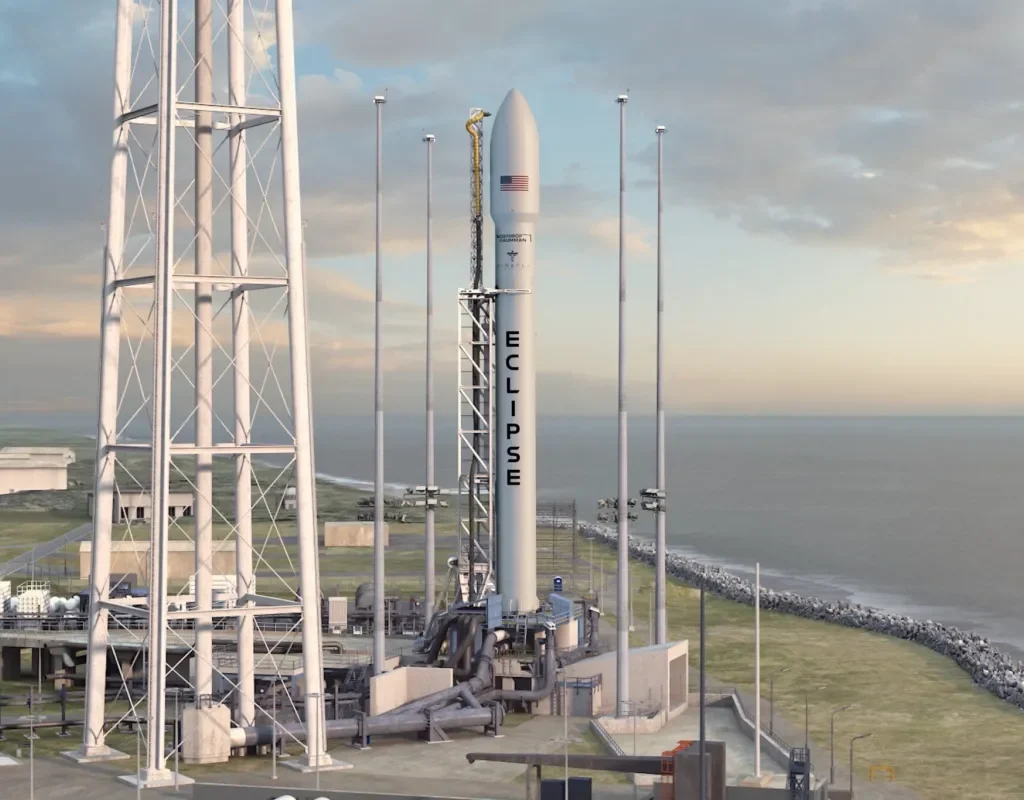Northrop Grumman announced on May 29 a $50 million investment in Firefly Aerospace, joining a $175 million Series D funding round for the company that values it at over $2 billion. The funding will support development of Firefly's medium-lift launch vehicle, recently renamed Eclipse.
Eclipse is designed to carry payloads up to 16,300 kilograms to low Earth orbit, striking a balance between capacity and affordability, according to Wendy Williams, vice president and general manager of launch and missile defense systems at Northrop Grumman.
The rocket leverages existing collaboration between the two companies on the Antares 330 launch vehicle, where Firefly provides a newly developed first stage replacing the previous Ukrainian-built component. Eclipse will use that Firefly first stage along with a new upper stage and an expanded payload fairing.
“Firefly is incredibly grateful for Northrop Grumman's investment that further solidifies our first-of-its-kind partnership to build the first stage of Antares 330 and jointly develop Eclipse,” Firefly CEO Jason Kim said.
While the Antares 330 serves primarily to deliver Cygnus cargo to the International Space Station, Eclipse is aimed at a broader market, including national security space missions. Eclipse's 16 metric ton payload capacity fits the needs of the U.S. Space Force's National Security Space Launch (NSSL) Phase 3 Lane 1 category, which targets newer medium-lift vehicles.
Kim said, “With a 16 metric ton to orbit capability, Eclipse is a sweet spot for programs like NSSL Lane 1.”
The U.S. Space Force recently added Rocket Lab's Neutron and Stoke Space's Nova to Lane 1 and plans to solicit proposals for additional vehicles in fiscal year 2026.
Details on Eclipse's progress remain limited; the companies noted ongoing testing of the Miranda engine for its first stage and other hardware development. The first flight is expected no earlier than 2026 from Wallops Island, Virginia.
Separately, Northrop Grumman CEO Kathy Warden, speaking May 28 at Bernstein's Strategic Decisions Conference, highlighted growth potential in commercial and government launch sectors, especially related to solid rocket boosters for United Launch Alliance's Vulcan Centaur rocket. However, she expressed little optimism about NASA's budget outlook, indicating limited future growth from NASA programs.
“NASA has an important mission,” Warden said, “but it's just not going to be as well-resourced in the foreseeable future, based on what we're hearing.”
Northrop's current NASA work includes providing twin solid rocket boosters for the Space Launch System, the HALO module for the lunar Gateway, and Cygnus resupply missions for the ISS. Recent White House budget proposals would cancel the Gateway and end SLS after Artemis 3, while reducing ISS operating funds.
Warden concluded, “It has been a relatively small portion of our portfolio even now, and we expect…it will not be a growth driver for us.”
